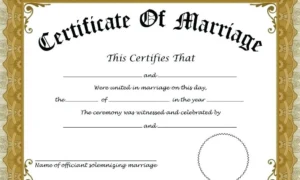
Writing an essay can be difficult, regardless of its length—whether it is 300 words or 30 pages. Before a deadline, it can seem overwhelming to figure out how to convey your ideas, the appropriate diction, paragraph order, and other things. Even if you have great writing abilities, it is not an easy job to write an essay perfectly. That is why knowing how to write an essay is very important. In this write-up, we will discuss the most important steps in writing an essay.
Steps in Writing An Essay
Step 1 – Choose a Topic
The first step is deciding on an appropriate, interesting topic for your essay.
- Make sure it is narrow enough to be manageable within the word or page limit.
- Brainstorm ideas and perform preliminary research to help select a topic that interests you, appeals to the audience, and has enough depth to be discussed at length.
- You need to define the purpose of the essay as well.
- Knowing the purpose will help focus the essay.
Step 2 – Research the Topic
Once you have chosen the topic, you need to conduct research to uncover facts, examples, statistics, quotes, and evidence that relate to the essay topic. It is one of the most steps in writing an essay. Here are some guidelines to follow-
- Use credible sources like scholarly articles, medical or government reports, newspaper articles, studies or publications from reputable organisations.
- Take detailed notes from your sources, being sure to also note bibliographic information for proper citations.
- Research will add authority to your essay and help inform your position.
- The more in-depth your research, the more informed your essay will be.
Step 3 – Develop a Thesis Statement
A thesis statement condenses the central argument or main point of your essay into one or two sentences. Here’s some points to remember
- Make it concise and definitive.
- Position it appropriately.
- Make it arguable, not obvious. The thesis should express a debatable point that requires proof and convincing language.
- Align it with the essay purpose. Ensure the thesis statement aligns with the overall reason for writing the essay.
- Support it with evidence. A strong thesis can be backed by research data, facts, expert opinions, statistics, definitions, logical explanations, or other evidence provided in the body paragraphs.
Step 4 – Create An Outline
Outline the structure of your essay. Typical essay structure includes an introduction, 3-4 body paragraphs, and a conclusion. Here are some key points to follow-
- The outline should include an introduction, body paragraphs, and conclusion.
- Organise ideas and research into sections with main topics and supporting details.
- Ensure a logical flow of points that relate back to the thesis.
- Stick to the established structure without straying off topic.
- Following these key steps will provide framework and direction to write a focused, structured essay.
Step 5 – Write the Introduction
The introduction grabs attention and states the intent of the essay, which makes one of the most essential steps in writing an essay. It should include the thesis statement or a summary of the central ideas. You can also follow the below points to write better introduction – Use an interesting opening hook to draw readers in like a relevant quote, statistic, question or anecdote. Provide necessary background context so readers understand the topic. End with a transition to the first point. The introduction sets the tone for the whole essay, so make sure it is strong and concise.
Step 6 – Write the Body Paragraphs
In the body paragraphs, fully develop the main points and arguments stated in the thesis. To write good body paragraphs, follow the below guidelines-
- Each paragraph should have a topic sentence connecting to the thesis.
- Provide strong evidence like facts, quotes, examples to support arguments.
- Analyse evidence to build reasoning. Use transitions between ideas and paragraphs. Maintain focus on the central thesis throughout.
- Following these steps will create unified, well-supported body paragraphs to reinforce the essay’s main ideas.
Step 7 – Write the Conclusion
If you want to know about the steps in writing an essay, the conclusion part is really important for you to know as it provides closure and reiterates the main ideas of the essay. Here’s how you can write a better conclusion –
- Restate the thesis in different words and summarise supporting points.
- Do not simply repeat things verbatim from the introduction or body of the essay.
- End by broadening out the topic and leaving the reader with something to think about.
- The conclusion should provide resolution without introducing any new ideas.
Step 8 – Revise and Edit the Essay
The next one in the list of steps in writing an essay is to revise and edit. In the revision process, you must-
- Ensure the essay flows logically from one idea to the next.
- Make sure your thesis is supported throughout with evidence and analysis.
- Watch for inconsistencies, gaps in reasoning, spelling errors, grammar mistakes, typos and other glitches.
- Revise for clarity and concision.
- Remove unnecessary words and tighten language.
- Refine until you have a strong, clear, error-free essay.
Step 9 – Cite Sources Properly
Throughout the essay, source citations must be included for any information or ideas that are not your own. Here’s how you can cite sources properly –
- Adhere to the citation style specified by the instructor, such as MLA, APA, Chicago, etc. Formatting, placements and content of citations differ between styles.
- Provide full bibliographic information in a separate references or works cited page at the end.
- Proper citations validate source use and ensure you don’t commit plagiarism.
Step 10 – Finalise the Essay
While you are looking for steps in writing an essay, the last step is to read your essay from start to finish again before submitting. Here are some key things to remember-
- Check that it meets assignment length requirements.
- Ensure the essay directly answers the prompt and effectively achieves the purpose.
- Confirm it is formatted appropriately.
- Read the essay aloud, looking for sections that seem awkward, confusing or repetitious.
- Make final grammar corrections and proofread meticulously to polish the essay to its highest shine before submission.








































